How our ancestors kept money and jewelry without banks and safes
Categories: Economy
By Pictolic https://pictolic.com/article/how-our-ancestors-kept-money-and-jewelry-without-banks-and-safes.htmlNow we can keep our savings in a bank or, if we don't trust financial institutions, put them in a safe and keep them at home. And how did our ancestors get out of the situation in those days when there were no banks and fireproof cabinets in Russia, but there were a lot of dashing people greedy for other people's property?
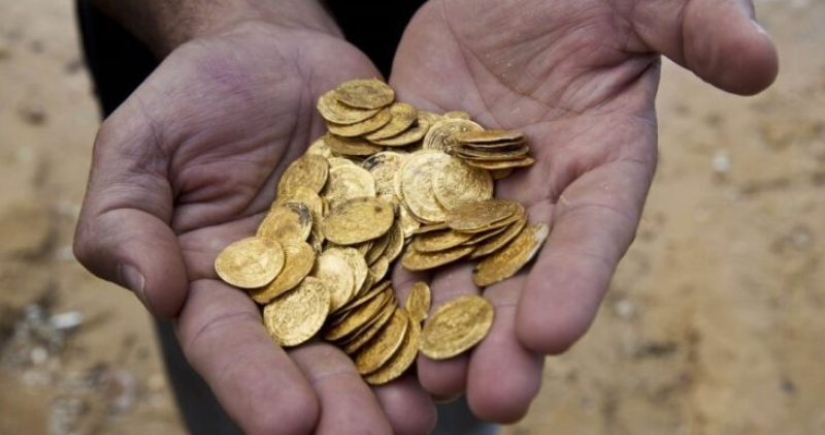
Our ancestors, in order to reliably preserve the capital acquired by overwork or trade, needed to have ingenuity, excellent memory and good physical shape.
The peasants, among whom there were few rich people, were forced to constantly collect money for some needs. Sometimes funds were needed to buy a horse or cow, and sometimes it happened that it was necessary to rebuild a new house or buy a bride from a serf master.
Capital could be stored in several ways. If we were talking about a significant amount, the easiest way was to invest it in land that could be used for farming or as pasture. If necessary, the plot can be sold, and while it has not come - to get some benefit from it.
If there wasn't much money, it was still safest to invest it in land, but in a slightly different sense. Surely everyone has heard the word "pot" and knows that it means a certain capacity for money. But very few people know how it looked and was used.
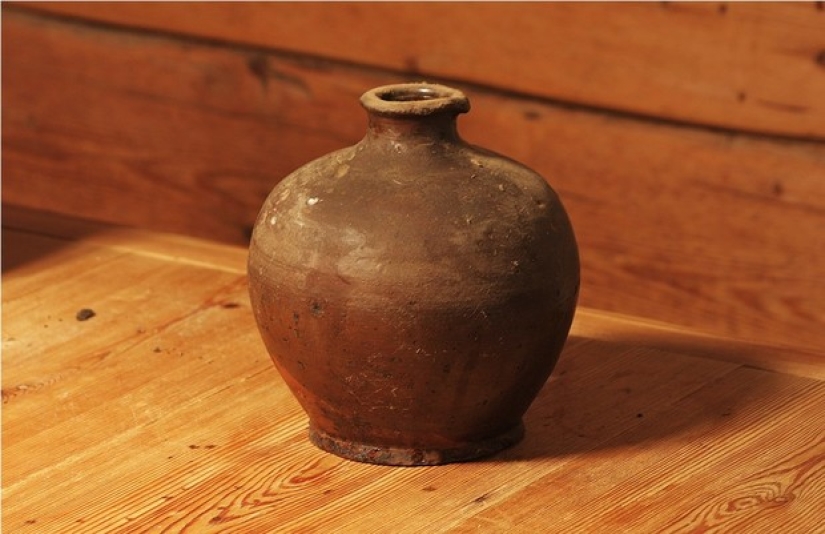
The cup was a clay vessel with steep sides and a narrow neck. This form was chosen for a reason — if the cup fell sideways, then the coins did not fall out of it. The smallest coins-"scales" were hidden in small cubes, the size of a fist. Larger coins were placed in large containers with thick walls.
The shape of the cup was ideal for burying it in the ground, throwing it into the water or bricking it in the masonry. The almost spherical shape provided it with resistance to compression from all sides and it was not easy to crush such a jug. It could only be broken with a hard object, and even then not by negligence, but purposefully, with some effort.
Interestingly, the cups of different regions of Russia differed from each other. Muscovites covered the clay with a special protective compound, which made the vessel look like a metal one. In Smolensk, Novgorod and Pskov used "watering" - a method of applying glaze, which gave the cup a beautiful yellow color.

But all these excesses were practiced in cities, and on the periphery most often used pots of unbaked clay without any decorations. Sometimes they were ordered by potters, and sometimes they were made independently — so it was possible to preserve the "secret of the contribution" as much as possible.
Especially careful hid the container in cellars, springs and wells, buried it in an open field or forest, walled up in the walls and floors of houses and churches. It happened that the cups were buried in the graves of relatives or lonely people.
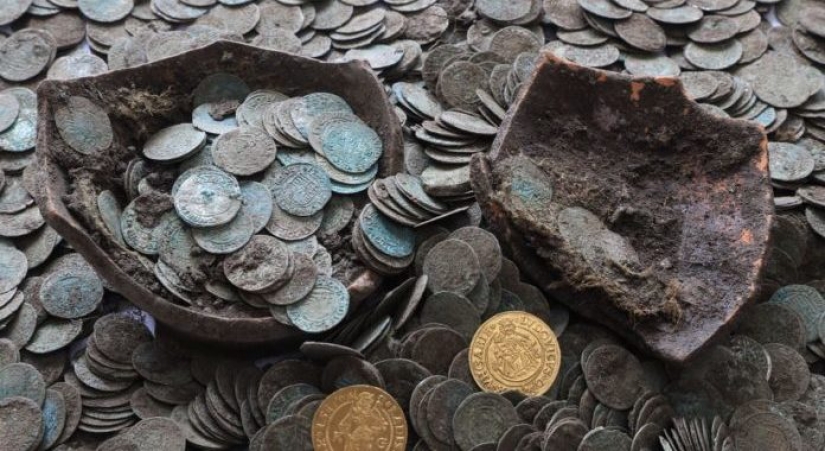
Most often, the pots were extracted from the cache by the owners themselves, but it also happened that the owner of the money died of old age or illness, died at the hands of the enemy or during a fire. The secret of the cup was taken to the grave by its owner and the money remained unclaimed. In such cases, vessels with coins become treasures: they are found accidentally or purposefully centuries later.
In addition to the pots with the savings of peasants and townspeople, sometimes there are also containers containing the loot of robbers or even whole gangs. The owners of criminal loot often ended their days on the gallows or in hard labor, and their pots remained unattended.
There were other ways of storing savings in Russia. Many preferred to keep valuables closer and equipped hiding places under the floor of their hut. It was an ordinary pit, dug in the earthen floor of the hut or equipped under the boards, like a small cellar. Such "earthen safes" gained popularity under Ivan the Terrible — in the 16th century there was such a cache in almost every peasant farm.
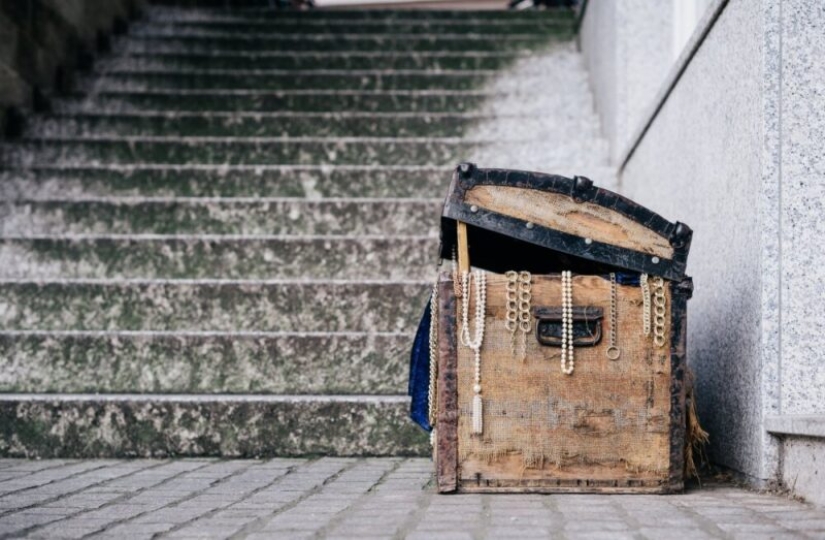
Foreigners visiting Russia were surprised by the passion of Russians to keep money below ground level. The German Augustine Meyerberg , who arrived in Muscovy from Austria in 1660 , wrote about this custom as follows:
From his notes it becomes clear that not only ordinary people and robbers kept valuables in the ground — some aristocrats also used this ancient method. For Europe, this was very strange, since it was customary to bury capital there only in emergency cases, for example, if the city was under siege and it was necessary to save valuables from the enemy.
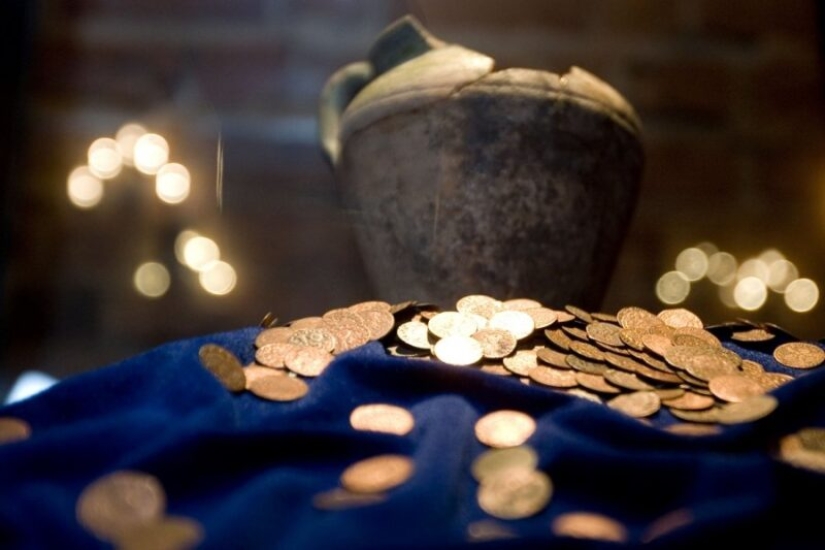
But back to Russia, where for centuries the acquired capital has been accustomed to trust Mother Earth. The issue of money for current needs also required an elegant solution. After all, it is inconvenient every time you need to buy a harness or a carrot for children, go with a spade in the field or undermine the floor in the house. For such cases, smaller, more accessible caches or "stashes" were arranged. Coins could be hidden in the cracks of the log house, under the threshold, in the "red corner" where the icons were located.
Those Russians who had a lot of money rarely kept them at all. Merchants preferred to put capital into circulation or invest in the purchase of real estate. Cash was often converted into valuables — silverware, expensive weapons, jewelry. With the advent of industry, factories, steamships or apartment houses were acquired with the money earned.

Banking in Russia began to develop rapidly only in the middle of the 18th century. In 1757, promissory notes began to circulate, and in 1769, the first paper banknotes were issued into circulation. It must be said that at first they were not in demand, since it was difficult to bring myself to believe that a piece of paper printed in a printing house was comparable in value to a full-fledged gold or silver coin.
In 1842, the Safe Treasury was replaced by savings banks, which could be used by all segments of the population. Almost simultaneously with the cash registers, savings books appeared, which were in use before the era of electronic bank cards.
Keywords: Bank | Money | House | Capital | Treasure | Coins | Rus
Post News ArticleRecent articles

American artist Lee Price is sure that eating is a completely natural process, but many are ashamed of their attitude to food, ...

There is an unusual exhibit at the National Museum of Natural History in Washington. This is the skeleton of a man, on whose chest ...
Related articles

Millions of people around the world buy lottery tickets in the hope of winning a happy life. They dream of luxury cars, luxury ...

Today we will show you photos of real people who live in tiny houses — most of these dwellings have an area of less than 18 ...

The fate of all hijackers of airliners is predetermined: they either end up behind bars, or die during the release of hostages by ...

A series of works by photographer Brian VILS from new York, dedicated to girls, sheltered the homeless and abandoned cats. 'brien ...